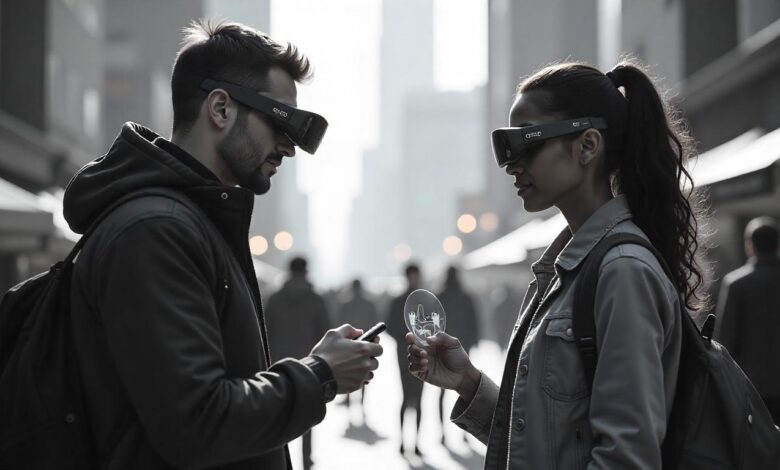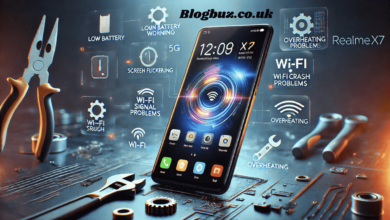The Future of Wearable Technology: Trends Shaping 2025 and Beyond

Wearable technology has come a long way from simple fitness trackers to becoming an integral part of our daily lives. With companies like Apple leading the charge, wearables are evolving into powerful tools for health, productivity, entertainment, and more. As we look toward 2025 and beyond, the wearable technology landscape promises even greater innovations.
In this post, we will explore key trends that will shape the future of wearables, including health advancements, augmented reality, and the role of companies like Apple in pushing the boundaries of what’s possible.
1. Health and Wellness at the Forefront
The primary driving force behind wearable technology’s evolution has been its ability to monitor and improve health. From heart rate tracking to advanced sleep analysis, wearables have made health monitoring more accessible than ever. In 2025 and beyond, expect to see even more comprehensive health features integrated into devices.
Key Innovations:
- Non-invasive Glucose Monitoring: Currently in development, wearable devices will soon offer the ability to monitor glucose levels in real-time without the need for finger pricks. This will be a game-changer for people with diabetes and others interested in tracking their blood sugar levels continuously.
- Advanced Mental Health Tracking: Wearables will integrate mental health features, such as stress monitoring through skin conductance sensors, mood tracking, and even real-time emotional support through AI-driven apps. This will be a major leap forward in wellness tracking.
- Personalized Health Insights: Artificial intelligence and machine learning will allow wearables to provide personalized advice, such as suggesting specific exercises or recommending changes in diet, all tailored to individual health data.
2. The Role of Apple in Shaping Wearables
When discussing the future of wearable technology, it’s impossible not to highlight Apple, a brand that has been at the forefront of the wearable revolution, particularly with the Apple Watch. Apple has continually set the bar for what wearables can achieve, blending cutting-edge technology with sleek design to create products that are both functional and fashionable. Apple’s approach to wearables is deeply rooted in its seamless ecosystem integration. The Apple Watch works effortlessly with iPhones, iPads, and Macs, offering an unparalleled user experience.
According to Apfel News, the Apple Watch Series 4, released in 2018, marked a significant milestone in wearable tech with its larger display, ECG function, and fall detection. Despite its vintage status, the impact of the Apple Watch Series 4 on the development of future smartwatches continues to be felt. This shift represents a bittersweet farewell to a groundbreaking device, which remains a symbol of Apple’s innovation in the wearables market.
Future Innovations from Apple:
- Augmented Reality Integration: With rumors of new AR features in upcoming Apple Watch models, Apple is positioning itself to be a leader in the next wave of wearables.
- Advanced Biometric Sensing: Apple will likely introduce more advanced biometric sensors, including improved heart-rate monitors, blood oxygen level tracking, and even more sophisticated features for monitoring overall wellness.
Through constant innovation, Apple continues to redefine what wearable technology can do, ensuring that it remains a critical player in the industry as it evolves.
3. Augmented Reality: The Next Big Leap
While the Apple Watch and fitness trackers are currently the go-to devices for wearables, the future of wearable technology will also be shaped by augmented reality (AR). As we move into the next decade, AR will become an essential component of wearables, especially glasses, contact lenses, and even AR-enabled smart clothing.
What AR Means for Wearables:
- Enhanced User Experiences: AR-powered wearables will overlay digital information onto the real world, creating a more immersive experience. For example, a pair of AR glasses could display real-time translation of foreign languages or provide navigation directions directly within a user’s field of vision.
- Gaming and Entertainment: Imagine playing video games that blend seamlessly with your surroundings or enjoying movies with a 360-degree view without needing a VR headset. As AR technology advances, we will see immersive experiences on wearables that combine physical and virtual worlds.
- Revolutionizing Industries: From healthcare to education to retail, AR-powered wearables will revolutionize how we interact with the world. Surgeons could perform operations with AR-assisted guidance, and teachers could use AR to create more interactive learning environments for students.
With companies like Apple already investing heavily in augmented reality, expect the Apple Glasses (or something similar) to make waves in the wearables market. Apple’s ongoing development of its ARKit framework for iOS hints at the company’s ambitions in this space, and we are likely to see more AR-based features on the Apple Watch as well, especially with the rise of the Vision Pro headset.
4. The Role of Marketing in the Wearables Industry
The success of wearable technology is not only due to the innovation behind the product but also the strategic marketing campaigns that bring them into the mainstream. Companies like Apple have mastered the art of wearable marketing, leveraging their established brand loyalty and ecosystem integration to ensure their products are widely adopted.
Apple’s marketing strategy for innovative products—especially for wearables like the Apple Watch Series 4—has focused on creating a sense of urgency and excitement. From limited-time offers to exclusive features, Apple knows how to make consumers feel like they can’t live without the latest model. Additionally, Apple has integrated its wearables into its broader lifestyle ecosystem, making the Apple Watch a natural extension of its other products, creating a seamless and cohesive user experience.
Marketing Tactics Apple Has Mastered:
- Storytelling: Apple uses storytelling to showcase how its devices fit into everyday life. The marketing campaigns for the Apple Watch emphasize real-world use cases, such as fitness tracking, health monitoring, and staying connected.
- Exclusivity: By positioning the Apple Watch as both a functional and stylish accessory, Apple has cultivated a sense of exclusivity around its products. The Apple Watch is marketed as a luxury wearable, blending cutting-edge technology with sleek design.
- Social Proof: Apple leverages customer testimonials, influencer marketing, and celebrity endorsements to create a sense of credibility and desirability around its products.
In the future, as wearables become more advanced, Apple’s marketing strategy will likely evolve to focus on more immersive experiences, highlighting the emotional and transformative impact wearables can have on people’s lives.
5. The Growing Importance of Data Privacy
As wearables become more ingrained in our daily routines, the volume of personal data they generate will only increase. From health data to location tracking, wearables will collect an enormous amount of sensitive information. In response, wearables will evolve to prioritize data security and privacy. A recent article by Apple M 9 to 5 Mac discussed how Apple is reinforcing its stance on user privacy, especially in the wearable sector. With the increased collection of sensitive health data, Apple has introduced new data encryption measures and secure data storage options to ensure that users’ personal information is protected.
As privacy becomes an even more pressing concern in the tech world, Apple M 9 to 5 Mac emphasizes that Apple’s focus on securing wearable technology data will continue to set the standard for the industry.
What’s to Expect:
- Local Data Processing: In the near future, wearable devices will process more data locally on the device, reducing reliance on cloud storage and limiting the exposure of personal information.
- Enhanced Encryption: Advanced encryption algorithms will become standard to protect user data, especially health-related information that is critical for privacy.
- User Control Over Data: Expect wearables to come with greater transparency, allowing users to control what data is collected and how it’s shared, making it easier to opt in or out of specific features without compromising privacy.
6. Sustainability and Eco-Friendly Wearables
As consumers become more environmentally conscious, the demand for sustainable tech products will grow. Wearables will evolve to be more energy-efficient and made from sustainable materials, contributing to a greener future.
Sustainability Trends:
- Recyclable Materials: The use of recyclable and biodegradable materials will become more common in wearables, reducing the environmental impact of discarded devices.
- Energy-Efficient Components: With advances in battery technology, future wearables will require less energy, extending battery life and reducing the frequency of recharging.
- Eco-friendly Packaging: Brands will also focus on reducing packaging waste and making their packaging materials eco-friendly, aligning with the growing demand for sustainable products.
Conclusion
As we move toward 2025 and beyond, wearable technology is poised for incredible growth. With innovations in health, augmented reality, privacy, and sustainability, the future of wearables is bright. Companies like Apple will continue to play a significant role in shaping this future, using their marketing prowess to ensure these devices become an integral part of our lives. Whether it’s health management, enhanced user experiences, or a more sustainable approach to technology, the next decade promises exciting advancements that will revolutionize the wearable tech industry.




